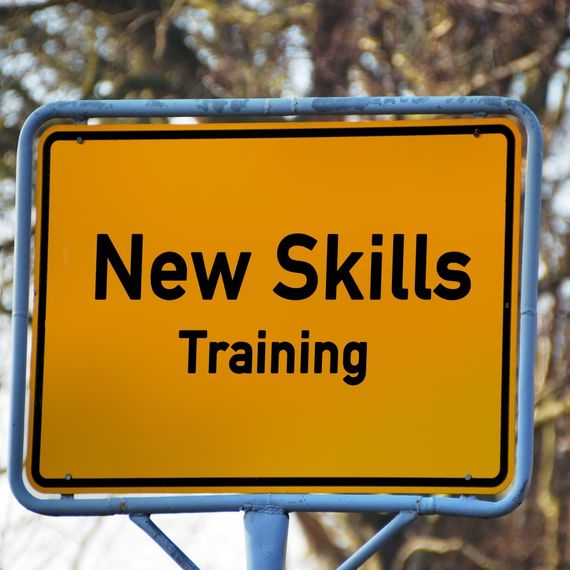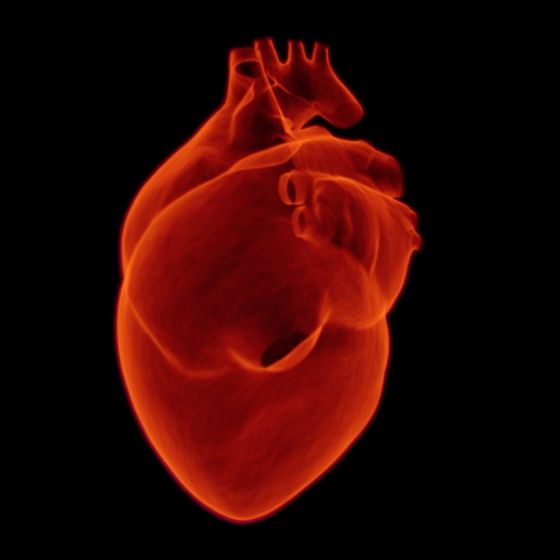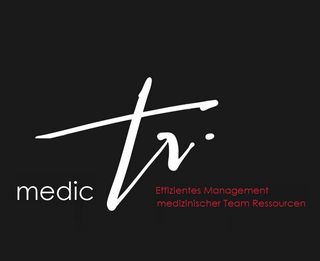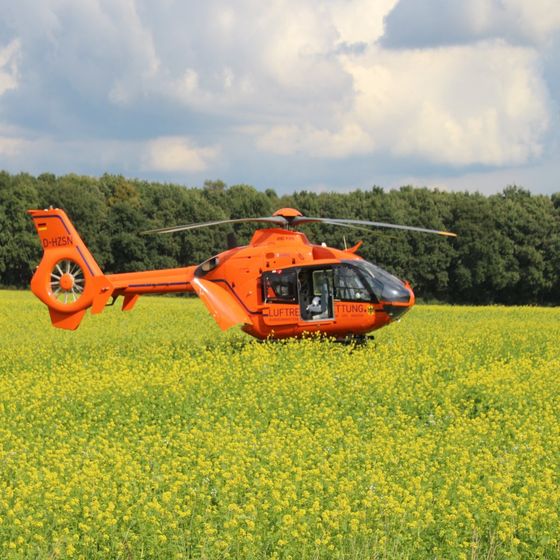medicTR
TORSTEN RENKEN
Lecturer in
Preclinical Emergency Medicine
TORSTEN RENKEN
Lecturer in
Preclinical Emergency Medicine
Efficient Management of
Medical Team Resources
Für die deutsche Version bitte hier
klicken.

FAQ about training
What does a training include?
All training includes hands-on training. This always precedes a technical update on the latest guidelines for the treatment of life-threatening emergencies. In the practical part, the participants can immediately use their new knowledge in different scenarios. So you ideally combine the prescribed first-aid training with your continuing education.
Why are the
Medical Team Resources MTR
so important?
Medical Team Resources MTR
so important?
Often we notice in training problems that are not based on technical deficits, but arise due to inefficient teamwork. Together, we analyze these issues and find sustainable solutions to better utilize your medical team resources. MTR's management is an aspect of training aimed at optimizing emergency response teams to avoid critical incidents due to human error. Effective teamwork involves the situational attention, leadership and decision-making, as well as the associated closed communication circuits. Through optimized processes in everyday practice, patient safety can be demonstrably increased. In the training we pay attention to efficient teamwork and help our participants to keep track even in complex situations and to lead an emergency team successfully. It has been proven that working efficiently in a team increases the satisfaction of your employees.
Individual emergency training in outpatient (child) intensive care
Training obligation acc. to § 132 SGB V
Some care services have specialized in certain groups of people. In a 1: 1 care, they provide outpatient intensive care for people in need of serious care, some of them life-threatening illnesses. This "out-of-hospital intensive care" (MDK) is carried out at home, in a residential community or in a residential nursing home. Included are patients requiring respiratory care (COPD) or patients with respiratory failure, paraplegics, patients with Apallic syndrome (wake coma), tumor diseases, patients with traumatic brain injury or other neurological disorders, unconsciousness / coma and patients with cardiac arrhythmias. The supply takes place around the clock, because at any time a life-threatening situation can occur, which demands immediate action. Equally suitable is an appropriate emergency training. The focus can be, for example:
Emergency training in
Ambulant Intensive Care
Ambulant Child Intensive Care
Ambulant Respiratory Care
Ambulant Child Respiratory Care
Respiratory Residential Community
Emergency training in
Ambulant Intensive Care
Ambulant Child Intensive Care
Ambulant Respiratory Care
Ambulant Child Respiratory Care
Respiratory Residential Community
Further focal points are possible by arrangement.
Duration and content of the seminar will be agreed individually.
Part of the seminar is always the
advanced resuscitation training
with defibrillator (AED).
The training takes place on your premises as an in-house seminar so that your existing materials can be integrated.
Duration and content of the seminar will be agreed individually.
Part of the seminar is always the
advanced resuscitation training
with defibrillator (AED).
The training takes place on your premises as an in-house seminar so that your existing materials can be integrated.

Emergency training in medical practices and dental surgeries
(BLS / ALS)
Life-threatening emergencies are not routine in a dentist's office. Regular emergency seminars provide your practice team with the necessary routine to confidently handle future emergencies.
Components of an individual training can be:
- Introduction and scientific basis
- Legal and ethical aspects
- Initial patient assessment
- Quality of chest compressions
- High - Performance - CPR -
Digital evaluation of compression
- Airway management and oxygen therapy
- Quality and quantity of ventilation with digital evaluation
- Bolus aspiration
- BLS-CPR team training
- Integration of ALS
- Reanimation update based on the guidelines of the AHA (American Heart Association) and the ERC (European Resuscitation Council)
- Airway Guards (Bag-Mask-Ventilation and Respiratory Aids)
- Importance and Management of a Defi ( AED) in practice
- Use of emergency medication
- Recognition and treatment of acute coronary syndrome (ACS) and apoplectic insult
- care and drug therapy for anaphylaxis
- Drug delivery routes: intravenous, intraosseous, buccal, sublingual, intranasal
- Simulation training
- Human influencing factors
- Team performance and management of the MTR
- Desired themes
Special course concepts for you
and your practice team.
and your practice team.
Emergency training in nursing (BLS / AED)
Training obligation acc. to § 132 SGB V
The obligation for nursing staff to undergo further training in accordance with § 132 SGB V, Quality and Quality Assurance,
is of great importance in outpatient and inpatient nursing care. During the MDK quality inspection, nursing services must also prove that their nursing staff are regularly trained in first aid and that there are binding regulations for behaviour in emergencies.
In contrast to the nursing, care and documentation of elderly, sick or disadvantaged people, the handling of medical emergencies is generally not part of the core competence of a nurse.
Here we support you with our three-hour short seminar: Emergency Training in Nursing familiarises you with the most important procedures and trains you to behave correctly in an emergency.
A medical emergency can also be a source of uncertainty for an experienced employee of an outpatient or state nursing facility: Not only must the severity of the situation be assessed in the shortest possible time, but life-supporting measures must also be taken. It is especially important to bridge the time until the rescue service arrives as sensibly and helpfully as possible.
In this emergency training possible knowledge deficits are closed, the care forces of your enterprise are taken away in addition, existing fears before medical emergencies and the correct behavior are obtained. We attach great importance to the practical communication of the correct procedures and to the answering of your individual questions, so that you are well prepared for emergencies in your daily work.
In contrast to the nursing, care and documentation of elderly, sick or disadvantaged people, the handling of medical emergencies is generally not part of the core competence of a nurse.
Here we support you with our three-hour short seminar: Emergency Training in Nursing familiarises you with the most important procedures and trains you to behave correctly in an emergency.
A medical emergency can also be a source of uncertainty for an experienced employee of an outpatient or state nursing facility: Not only must the severity of the situation be assessed in the shortest possible time, but life-supporting measures must also be taken. It is especially important to bridge the time until the rescue service arrives as sensibly and helpfully as possible.
In this emergency training possible knowledge deficits are closed, the care forces of your enterprise are taken away in addition, existing fears before medical emergencies and the correct behavior are obtained. We attach great importance to the practical communication of the correct procedures and to the answering of your individual questions, so that you are well prepared for emergencies in your daily work.
The seminar
Emergency Training in Nursing
lasts about three hours and covers the following topics:
- Recognition and assessment of a
medical emergency
- Affected person does not open the door
- the most common
Emergencies in care
- airway routing
- Highly effective cardiopulmonary
Resuscitation with and without
respiratory aids
- BLS resuscitation training
acc. to guidelines AHA / ERC
- Use and practical training
with an automated
external defibrillator (AED)
- Human Factors of Influence
- Team performance and management
of the medical team
resources
- Behaviour and cooperation
work with the rescue service
- desired topics
We coordinate the contents of the seminar with you in detail according to the individual circumstances and the personal needs of your nursing service and adapt the contents accordingly to your needs and wishes.
The short seminar over three hours takes place on your premises as an in-house seminar.
Emergency Training in Nursing
lasts about three hours and covers the following topics:
- Recognition and assessment of a
medical emergency
- Affected person does not open the door
- the most common
Emergencies in care
- airway routing
- Highly effective cardiopulmonary
Resuscitation with and without
respiratory aids
- BLS resuscitation training
acc. to guidelines AHA / ERC
- Use and practical training
with an automated
external defibrillator (AED)
- Human Factors of Influence
- Team performance and management
of the medical team
resources
- Behaviour and cooperation
work with the rescue service
- desired topics
We coordinate the contents of the seminar with you in detail according to the individual circumstances and the personal needs of your nursing service and adapt the contents accordingly to your needs and wishes.
The short seminar over three hours takes place on your premises as an in-house seminar.
Significance of defibrillation
Defibrillator (AED) "Defi"
Ventricular fibrillation is defined as the fast, chaotic contractions of the heart muscle, which lead to sudden cardiac death within a very short time - unless the lifesaving electric emergency brake is pulled in time. This is a surge with the defibrillator (AED). Prof. Dr. Hans-Joachim Trappe from the Medical Clinic II of the Ruhr University Bochum explains at the Heart Days of the German Society of Cardiology (DGK) in Berlin, that the shorter the time window between the onset of ventricular fibrillation and the shock delivery, the better the chances of the person concerned were to survive the event without consequential damage. Studies have shown that the survival rate in patients with ventricular fibrillation was 55 percent when the shock was delivered no more than two minutes after the detection of the situation. Spent more than two minutes, the chances were significantly worse. The German Social Accident Insurance points out that many companies even without direct obligation for their own reasons to buy an AED, z. For example, after specific deaths or for the prevention of sudden cardiac death. If AEDs are acquired by the company, company first responders and the medical personnel in the company should be qualified in the application of the AED. (DGUV regulation 1 "Principles of prevention", DGUV 204-010)
Resuscitation training for nursing staff (BLS / AED)
Training obligation acc. to § 132 SGB V
Obligation for nursing staff to undergo further training in accordance with § 132 SGB V, quality and quality assurance.
To prove during the MDK quality inspection for nursing services that the nursing staff is regularly trained in first aid and that there are binding regulations for behaviour in emergencies.
Our short seminar:
In 1.5 hours, resuscitation training for nursing staff will familiarise you with the guidelines for care in the event of cardiovascular arrest and will focus your team on the current state of knowledge in order to guarantee optimum care alone or in a team, with or without Defi.
The seminar
Resuscitation training for nursing staff
lasts about one and a half hours and covers the following topics:
- Respiratory tract obstruction
- Highly effective cardiopulmonary
resuscitation with and without
respiratory aids
- BLS resuscitation training
acc. to guidelines AHA / ERC
- Use and practical training
with an automated
external defibrillator (AED).
The short seminar about one and a half
hours takes place in your rooms
as an in-house seminar.
To prove during the MDK quality inspection for nursing services that the nursing staff is regularly trained in first aid and that there are binding regulations for behaviour in emergencies.
Our short seminar:
In 1.5 hours, resuscitation training for nursing staff will familiarise you with the guidelines for care in the event of cardiovascular arrest and will focus your team on the current state of knowledge in order to guarantee optimum care alone or in a team, with or without Defi.
The seminar
Resuscitation training for nursing staff
lasts about one and a half hours and covers the following topics:
- Respiratory tract obstruction
- Highly effective cardiopulmonary
resuscitation with and without
respiratory aids
- BLS resuscitation training
acc. to guidelines AHA / ERC
- Use and practical training
with an automated
external defibrillator (AED).
The short seminar about one and a half
hours takes place in your rooms
as an in-house seminar.
"There is only one thing
that is
more expensive
in the long run
thaneducation:
No education."
John F. Kennedy
Those who build up knowledge and skills today
that will be in demand tomorrow
develop their employees.
that will be in demand tomorrow
develop their employees.
Competent and motivated employees
form the stable foundation of your company.
Without stability,
the is no foundation for the building erected on it.
form the stable foundation of your company.
Without stability,
the is no foundation for the building erected on it.
There is a great danger that the building will collapse
in the event of a severe storm.
News

Structured emergency care
Of crucial importance for the survival of the emergency patient is a structured emergency care for disorders of internal and neurological genesis.
Guideline-oriented care includes the detection of critical and unstable patients, innovative patient assessment, immediate intervention, and differential diagnostic considerations for finding a diagnosis in the preclinical area.
With structured emergency care, all necessary individual measures can be combined so that time-critical patients are identified, adequate and guideline-oriented care is provided and the right target clinic is selected depending on the illness. The emergency patient benefits significantly from the overall improvement in time management.

Human Factors
The origin of a large part of incidents in medicine can be found in the area of "human factors".
While most medical training courses focus on medical content, today the following additional aspects are also considered effective communication within the team during complex emergency situations.
Improving even non-technical skills prevents incidents due to human error sources.
These components are relevant: Effective communication in the team, cooperation, situational attention, leadership behaviour and decision making.
Improving even non-technical skills prevents incidents due to human error sources.
These components are relevant: Effective communication in the team, cooperation, situational attention, leadership behaviour and decision making.

Efficient management of Medical Team Resources
Critical learning areas for emergency teams in medical practices,
dental offices and nursing homes include:
dental offices and nursing homes include:
The unconscious patient
Foreign body aspiration and acute respiratory distress
Legal and ethical aspects
Resuscitation of adults according to current guidelines
Use and status of an AED in practice and care
Acute coronary syndrome (ACS), apoplectic insult and blood sugar derailment
Airway management and oxygen therapy
Legal and ethical aspects
Care and drug therapy for anaphylaxis
The right emergency equipment for your rooms
Human factors
Efficient management of
Medical Team Resources
Medical Team Resources
Further individual topics according to arrangement.
Individual course concepts for you and your team.
Agree on a concept that is exactly right for you
and includes concrete action plans for your employees
in the event of emergencies in your working environment.
and includes concrete action plans for your employees
in the event of emergencies in your working environment.
"Coming together is the beginning.
Keeping together is progress.
Working together is success.”
― Henry Ford
Keeping together is progress.
Working together is success.”
― Henry Ford
Leading a team is a big challenge in itself. It also consists of promoting team spirit.
Because the stronger the team spirit, i.e. the cohesion in the group, the easier it is to achieve the set goals with the team.
If people act harmoniously with each other and support each other according to their individual abilities, the overall success is usually easier to achieve.
Not the team with the best individual players, but the team that harmonizes best as a team is usually the winner.
Ideally, the individual employees complement each other in a harmonious way and are thus in a position to increase the success of the company.
Because the stronger the team spirit, i.e. the cohesion in the group, the easier it is to achieve the set goals with the team.
If people act harmoniously with each other and support each other according to their individual abilities, the overall success is usually easier to achieve.
Not the team with the best individual players, but the team that harmonizes best as a team is usually the winner.
Ideally, the individual employees complement each other in a harmonious way and are thus in a position to increase the success of the company.




